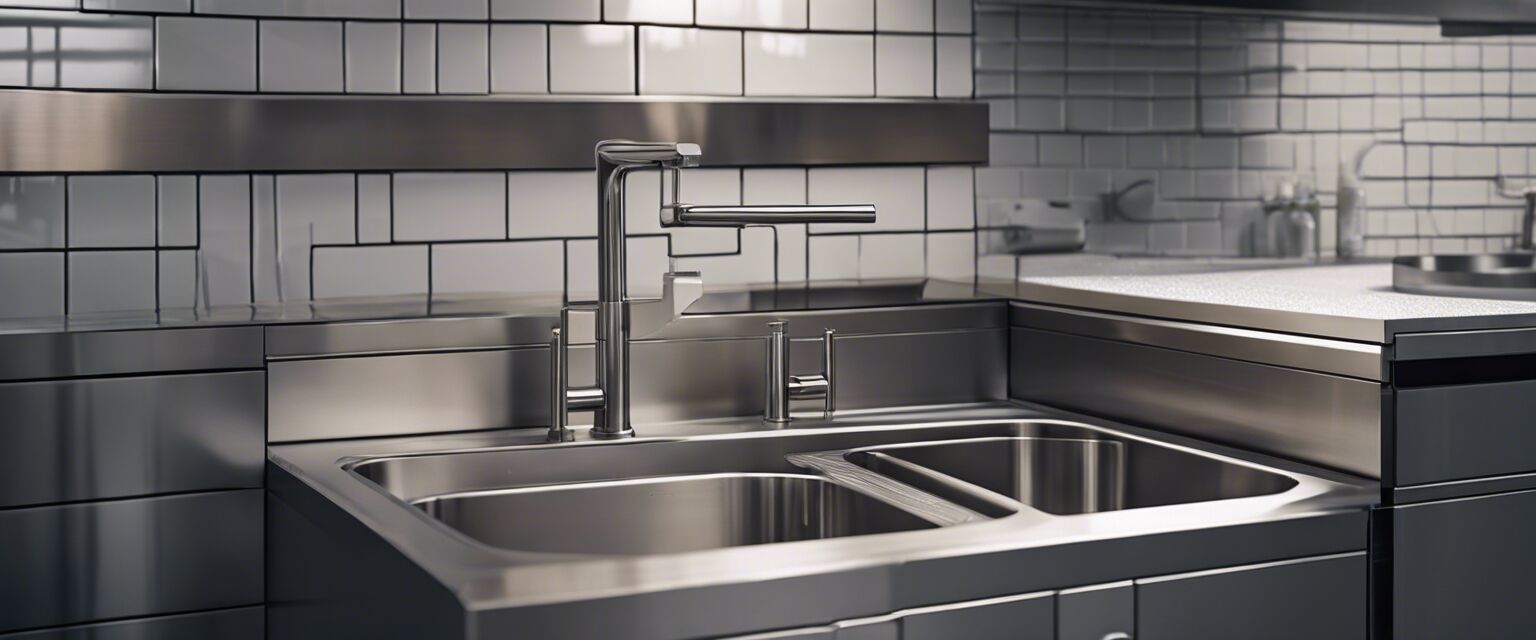
Kitchen Prep Sinks
- Kitchen prep sinks are essential for food preparation in commercial kitchens.
- Different types of prep sinks cater to various needs and requirements.
- Understanding the benefits and features can help in making the right choice.
Kitchen prep sinks play a vital role in maintaining hygiene and efficiency in commercial kitchens. Whether you are operating a restaurant, school, or any institution with a kitchen, having the right prep sink can make a significant difference in your workflow.
What is a kitchen prep sink?
A kitchen prep sink is a smaller sink used primarily for food preparation tasks. They are designed to facilitate washing, rinsing, and preparing food items before cooking or serving. These sinks are essential in ensuring cleanliness and compliance with health regulations in commercial kitchens.
Benefits of kitchen prep sinks
- Enhances food safety by providing a dedicated space for washing ingredients.
- Improves workflow by separating food prep from dishwashing areas.
- Reduces the risk of cross-contamination.
Types of kitchen prep sinks
Kitchen prep sinks come in several types, each designed for specific tasks. Below is a comparison table highlighting the main types of kitchen prep sinks.
| Type of Sink | Description | Best For |
|---|---|---|
| Corner Sinks | Designed to fit into corners, maximizing space. | Small kitchens or tight spaces. |
| Drop-In Sinks | Installed by dropping into a pre-cut hole in the countertop. | Easy installation and versatility. |
| Handwashing Sinks | Specifically for handwashing to comply with health codes. | Ensuring hygiene standards. |
| Utility Sinks | Deep sinks for heavy-duty tasks and cleaning. | Washing larger items such as pots and pans. |
| Stainless Steel Sinks | Durable and easy to clean, ideal for commercial use. | Long-lasting performance in busy kitchens. |
Choosing the right kitchen prep sink
Selecting the right prep sink depends on your kitchen's layout and specific needs. Here are some factors to consider:
- Space: Measure your available area to ensure the sink fits perfectly.
- Material: Stainless steel is popular for its durability and ease of maintenance.
- Features: Look for additional features like sprayers, drains, and accessibility.
Common uses for kitchen prep sinks
Kitchen prep sinks can be utilized in various ways:
- Washing vegetables and fruits.
- Rinsing raw proteins such as fish or meat.
- Cleaning utensils and cutting boards used for food prep.
- Quickly washing hands between tasks to maintain hygiene.
Maintenance of kitchen prep sinks
Proper maintenance ensures longevity and hygiene of kitchen prep sinks. Here are some tips:
Tips for maintaining kitchen prep sinks
- Clean the sink daily with non-abrasive cleaners.
- Inspect for any leaks or damages regularly.
- Ensure proper drainage to avoid clogs.
- Sanitize after washing raw food items to prevent contamination.
Popular kitchen prep sink materials
Different materials offer unique benefits. Hereâs a brief overview:
| Material | Advantages | Disadvantages |
|---|---|---|
| Stainless Steel | Durability, easy to clean, resistant to rust. | Can be scratched easily. |
| Composite | Stylish, available in various colors. | Can be more expensive. |
| Porcelain | Aesthetic appeal, easy to clean. | Can chip or crack easily. |
Conclusion
Kitchen prep sinks are essential components in any commercial kitchen, contributing significantly to efficiency and cleanliness. By understanding the types, benefits, and maintenance of these sinks, you can make an informed decision that best suits your culinary needs. Explore our range of prep sinks to find the ideal fit for your kitchen.
Pros
- Improves food safety and hygiene.
- Enhances kitchen workflow.
- Variety of styles to fit any kitchen layout.
Cons
- Requires space in the kitchen.
- Can be an additional cost for installation.
Further resources
For more information about kitchen sinks, check out our pages on corner sinks, drop-in sinks, handwashing sinks, and undermount sinks.











